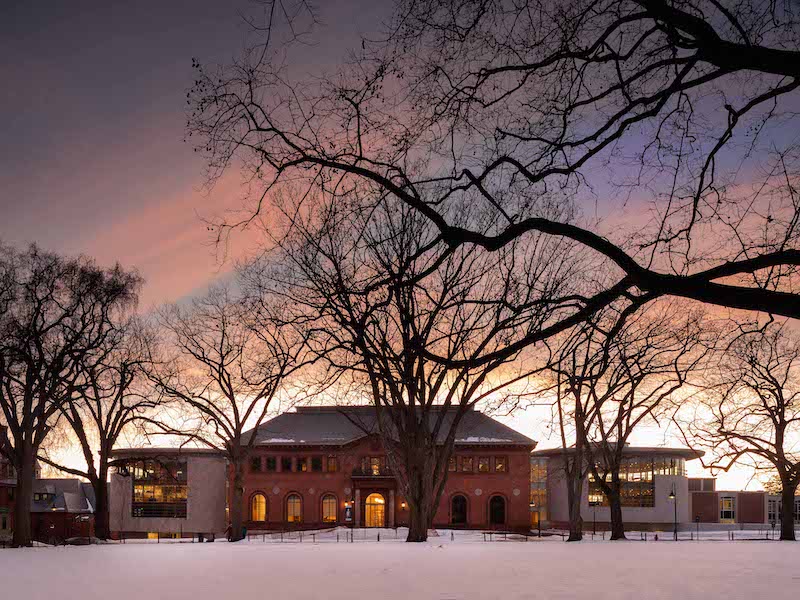Shawmut Design and Construction has recently completed the $120 million renovation of Smith College’s Neilson Library in Northampton, Ma. The project took the original, outdated building and reimagined it as the energy-efficient, intellectual heart of the campus.
In partnership with architectural designer Maya Lin and principal architect Shepley Bulfinch, the 200,000-sf project restored the building and created an energy-efficient design and flexible collaborative workspaces.
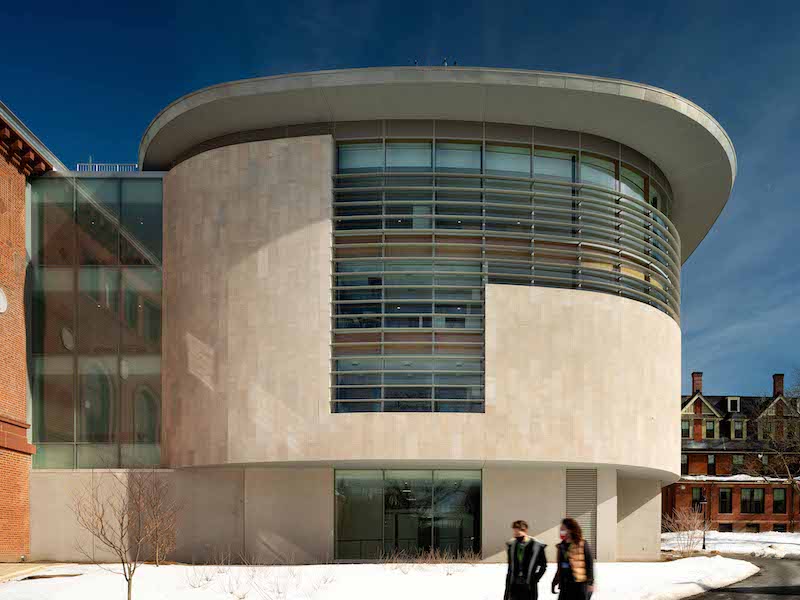
The building’s main entrance opens into a large atrium that features a four-story oculus. The building’s use of glass, wood, and stone works with the design to promote harmony with the surrounding exterior landscape, designed by Edwina von Gal with Ryan Associates.
The original 1909 facade is incorporated into the reimagined building, which is composed of three distinct sections: the central core and two new wings. The new wings are dubbed jewel boxes for their curved, light-filled design made from a mix of masonry, wood, and glass.
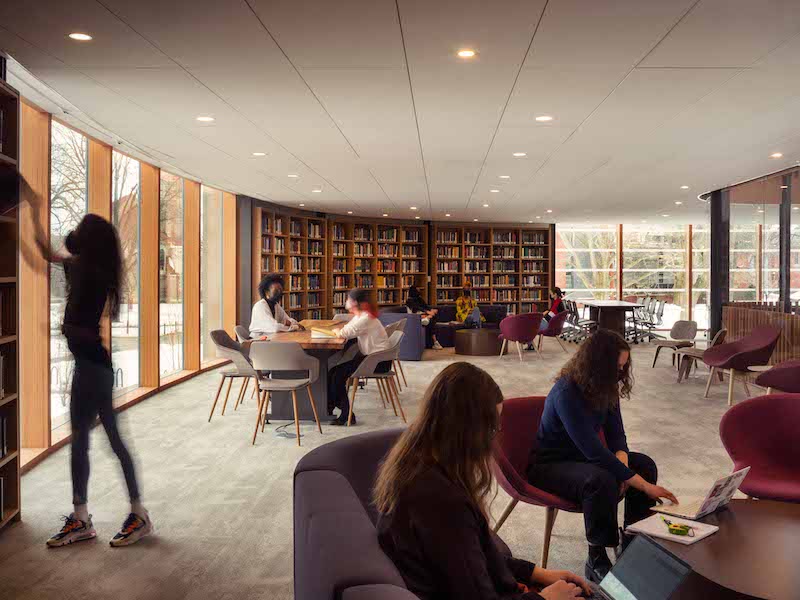
The north wing, named for Smith’s ninth president, Ruth J. Simmons, comprises spaces to support active learning and innovation. The south wing, named in honor of Smith’s eighth president, Mary Maples Dunn, brings together special collections (the Sophia Smith Collection, Rare Books, and College Archives) into one climate-controlled area.
SEE ALSO: MiraCosta Community College to receive new Chemistry and Biotechnology Building
Flexible, collaborative workspaces include the Learning Commons, the Jill Ker Conway Innovation and Entrepreneurship Center, and the Special Collections Seminar Room. A series of classroom spaces, a reading room, study areas, a sunken courtyard, and event spaces, and an outdoor amphitheater with shaded seating are also included.
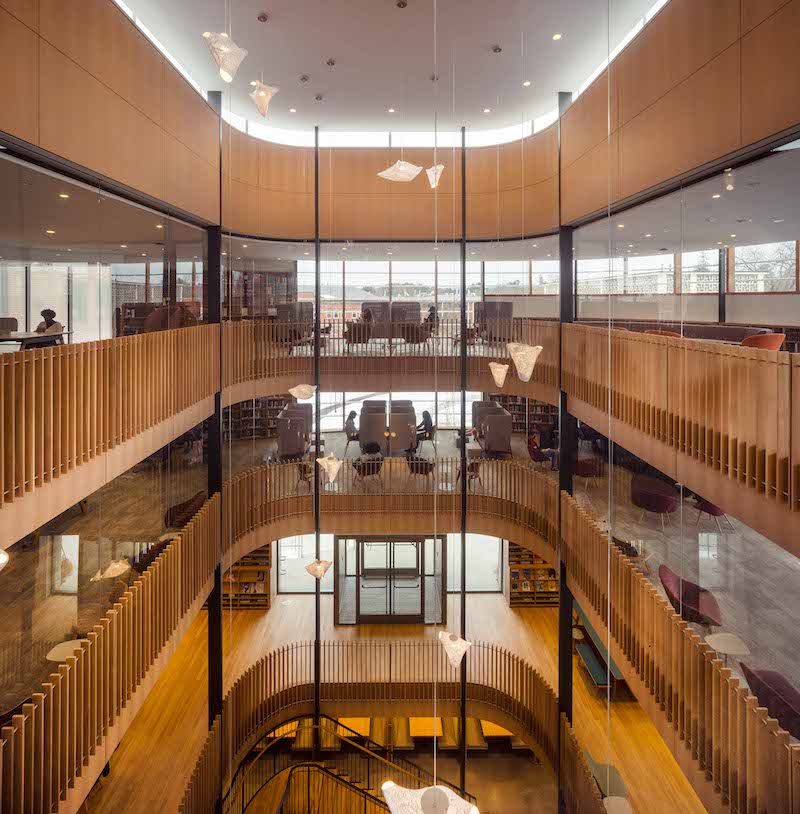
A Digital Media Hub offers studios for students to record podcasts, videos, and use other digital media; self-service labs for students to use technologies such as spatial analysis, gaming software, survey software, and GIS; a User Experience Lab for research and usability testing; and access to large-format and 3D printers.
Additionally, the Neilson Library is now connected to the recently renovated Alumnae Gym via an interior walkway. The Alumnae Gym provides additional learning spaces that are open 24/7.
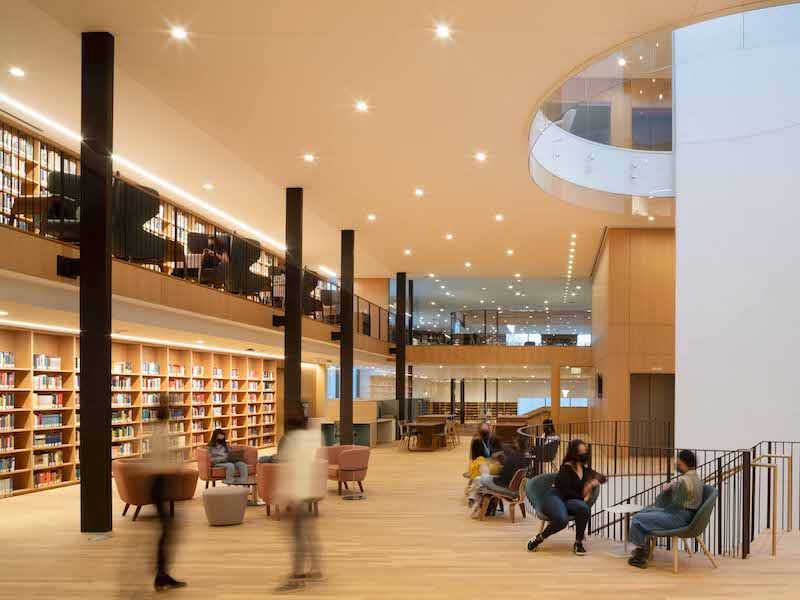
Sustainability features include a high-performance building envelope, advanced daylighting strategies, and materials that promote health and wellness. Throughout, the library incorporates materials that promote health and wellness by not containing harmful chemicals, as well as local, regional, and recycled products. The building has the ability to become an ‘all-electric’ complex and is pursuing LEED V.4, Gold Accreditation.
Related Stories
| Jun 12, 2014
Tod Williams Billie Tsien Architects' design selected for new UCSC facility
The planned site is a natural landscape among redwood trees with views over Monterey Bay, a site that the architects have called “one of the most beautiful they have ever worked on.”
| Jun 12, 2014
Austrian university develops 'inflatable' concrete dome method
Constructing a concrete dome is a costly process, but this may change soon. A team from the Vienna University of Technology has developed a method that allows concrete domes to form with the use of air and steel cables instead of expensive, timber supporting structures.
| Jun 11, 2014
5 ways Herman Miller's new office concept rethinks the traditional workplace
Today's technologies allow us to work anywhere. So why come to an office at all? Herman Miller has an answer.
| Jun 9, 2014
6 design strategies for integrating living and learning on campus
Higher education is rapidly evolving. As we use planning and design to help our clients navigate major shifts in culture, technology, and funding, it is essential to focus on strategies that help foster an education that is relevant after graduation. One way to promote relevance is to strengthen the bond between academic disciplines and the campus residential life experience.
| May 29, 2014
7 cost-effective ways to make U.S. infrastructure more resilient
Moving critical elements to higher ground and designing for longer lifespans are just some of the ways cities and governments can make infrastructure more resilient to natural disasters and climate change, writes Richard Cavallaro, President of Skanska USA Civil.
Sponsored | | May 27, 2014
Grim Hall opens the door to fire safety with fire-rated ceramic glass
For the renovation of Lincoln University’s Grim Hall life sciences building into a state-of-the-art computer facility, Tevebaugh Associates worked to provide students and faculty with improved life safety protection. Updating the 1925-era facility's fire-rated doors was an important component of the project.
| May 20, 2014
Kinetic Architecture: New book explores innovations in active façades
The book, co-authored by Arup's Russell Fortmeyer, illustrates the various ways architects, consultants, and engineers approach energy and comfort by manipulating air, water, and light through the layers of passive and active building envelope systems.
| May 19, 2014
What can architects learn from nature’s 3.8 billion years of experience?
In a new report, HOK and Biomimicry 3.8 partnered to study how lessons from the temperate broadleaf forest biome, which houses many of the world’s largest population centers, can inform the design of the built environment.
| May 13, 2014
19 industry groups team to promote resilient planning and building materials
The industry associations, with more than 700,000 members generating almost $1 trillion in GDP, have issued a joint statement on resilience, pushing design and building solutions for disaster mitigation.
| May 11, 2014
Final call for entries: 2014 Giants 300 survey
BD+C's 2014 Giants 300 survey forms are due Wednesday, May 21. Survey results will be published in our July 2014 issue. The annual Giants 300 Report ranks the top AEC firms in commercial construction, by revenue.


